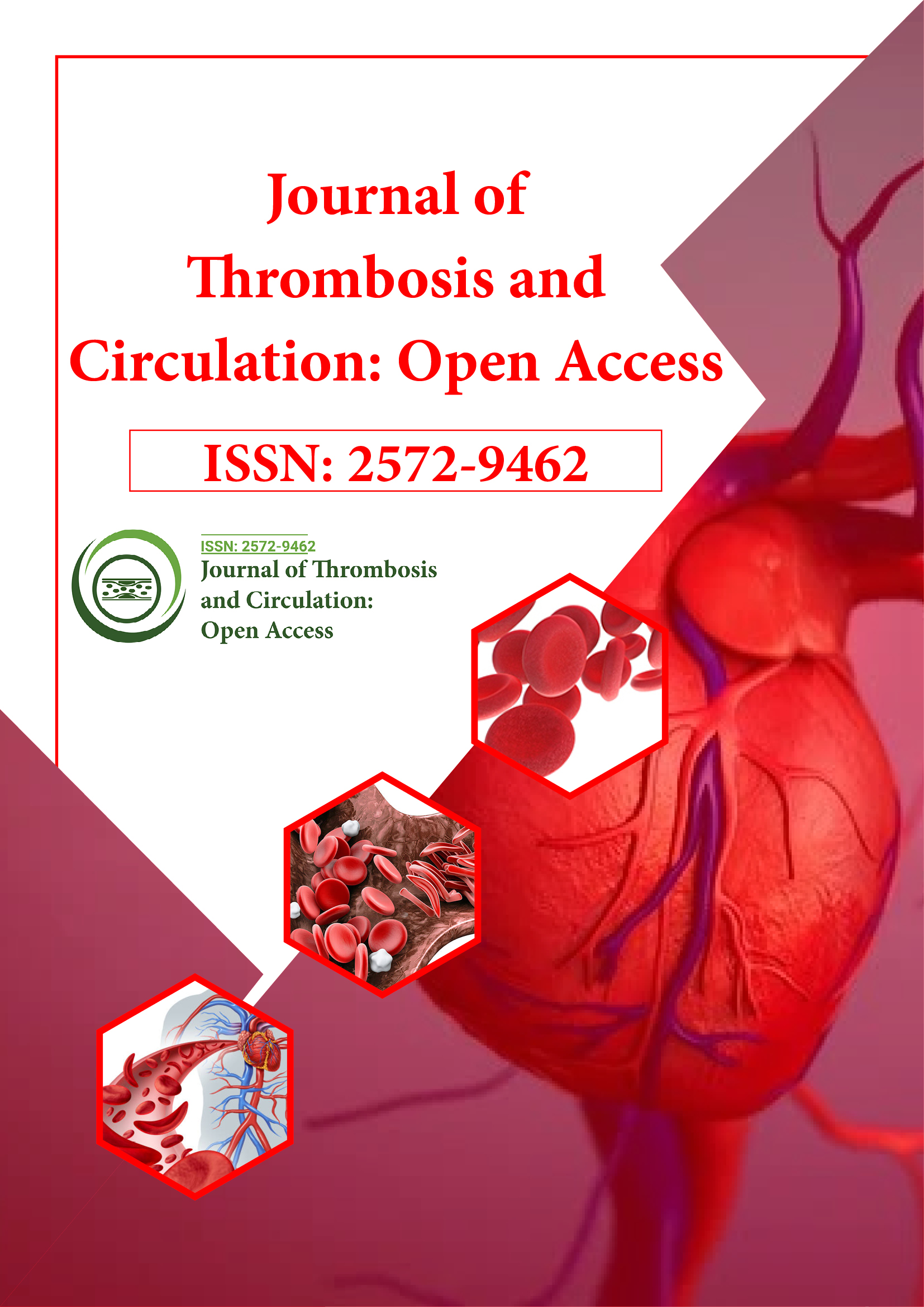Indexed In
- RefSeek
- Hamdard University
- EBSCO A-Z
- Publons
- Google Scholar
Useful Links
Share This Page
Journal Flyer

Open Access Journals
- Agri and Aquaculture
- Biochemistry
- Bioinformatics & Systems Biology
- Business & Management
- Chemistry
- Clinical Sciences
- Engineering
- Food & Nutrition
- General Science
- Genetics & Molecular Biology
- Immunology & Microbiology
- Medical Sciences
- Neuroscience & Psychology
- Nursing & Health Care
- Pharmaceutical Sciences
Commentary - (2024) Volume 10, Issue 3
Early Diagnosis of Cerebral Vein Thrombosis Using Noncontrast CT Imaging
Olivia Martin*Received: 30-Aug-2024, Manuscript No. JTCOA-24-21418; Editor assigned: 02-Sep-2024, Pre QC No. JTCOA-24-21418 (PQ); Reviewed: 16-Sep-2024, QC No. JTCOA-24-21418; Revised: 23-Sep-2024, Manuscript No. JTCOA-24-21418 (R); Published: 30-Sep-2024, DOI: 10.35248/2572-9462.24.10.282
Description
Cerebral Vein Thrombosis (CVT) is a relatively rare but serious neurological condition caused by thrombosis within the cerebral venous system. This condition can lead to increased intracranial pressure, cerebral edema and venous infarction and, in severe cases, hemorrhage, making prompt diagnosis critical. The clinical presentation of CVT is highly variable, often including symptoms such as headache, seizures, focal neurological deficits and altered mental status. However, the nonspecific nature of these symptoms makes imaging indispensable for confirming the diagnosis. Among imaging techniques, noncontrast Computed Tomography (CT) of the brain is widely used as an initial diagnostic tool, owing to its availability, rapid acquisition and cost-effectiveness.
Noncontrast CT plays an important role in the early stages of CVT evaluation. It serves as the first-line imaging modality in many healthcare settings, particularly in emergency departments, where rapid assessment is required to guide clinical decision-making. While noncontrast CT is not as sensitive or specific as advanced imaging modalities like Magnetic Resonance Venography (MRV) or CT Venography (CTV), it provides critical preliminary information that can influence further diagnostic pathways. One of the key findings of CVT on noncontrast CT is the hyperdense venous sinus sign. This radiological feature represents a thrombus within the cerebral venous sinuses and is typically observed during the acute phase of CVT, when the clot is densely packed with red blood cells. The most commonly affected venous sinus is the superior sagittal sinus, although other sinuses such as the transverse or sigmoid sinuses may also be involved.
Noncontrast CT can also reveal secondary effects of venous outflow obstruction. Edema, venous infarction, or hemorrhagic infarctions are common findings in patients with CVT. These complications arise due to increased venous pressure and disrupted cerebral blood flow. The distribution of these abnormalities often follows the affected venous drainage territory, offering clues to the underlying venous pathology. Hemorrhagic infarctions, in particular, are an important clue, as they are relatively more common in CVT compared to arterial strokes. Despite its strengths, noncontrast CT has several limitations in the diagnosis of CVT. Its sensitivity is variable, ranging between 25% and 65%, depending on the stage of the disease and the imaging protocols used. This limitation is particularly evident in subacute and chronic CVT, where the thrombus may no longer appear hyperdense. Additionally, false positives can occur due to conditions such as dehydration, elevated hematocrit, or beam-hardening artifacts, which may mimic the appearance of a hyperdense sinus. These challenges underscore the need for complementary imaging modalities to confirm the diagnosis.
Advanced imaging techniques such as CTV or MRV are considered the gold standard for CVT diagnosis. These modalities provide detailed visualization of the venous system, allowing direct identification of the thrombus and assessment of venous flow. In many cases, the role of noncontrast CT is to raise suspicion of CVT and prompt further investigation using these advanced tools. For instance, the presence of a hyperdense sinus or atypical infarction on noncontrast CT often leads to immediate confirmation with CTV or MRV. The utility of noncontrast CT is also shaped by its accessibility and cost. In resource-limited settings or rural healthcare facilities, where advanced imaging techniques may not be readily available, noncontrast CT often serves as the only feasible diagnostic option. In such contexts, a high index of clinical suspicion and careful interpretation of CT findings are essential for making an accurate diagnosis and initiating treatment.
In conclusion, noncontrast CT remains an indispensable component of the diagnostic approach to CVT, particularly in emergency and resource-limited settings. Its ability to detect early signs such as the hyperdense venous sinus and secondary complications like venous infarction or hemorrhage ensures timely clinical intervention. Although its sensitivity and specificity are limited compared to advanced imaging modalities, its accessibility and rapid results make it a cornerstone in the initial evaluation of suspected CVT. By facilitating prompt diagnosis and guiding further investigation, noncontrast CT plays a critical role in improving outcomes for patients with this potentially life-threatening condition.
Citation: Martin O (2024). Early Diagnosis of Cerebral Vein Thrombosis Using Noncontrast CT Imaging. J Thrombo Cir. 10:282.
Copyright: © 2024 Martin O. This is an open-access article distributed under the terms of the Creative Commons Attribution License, which permits unrestricted use, distribution, and reproduction in any medium, provided the original author and source are credited.
